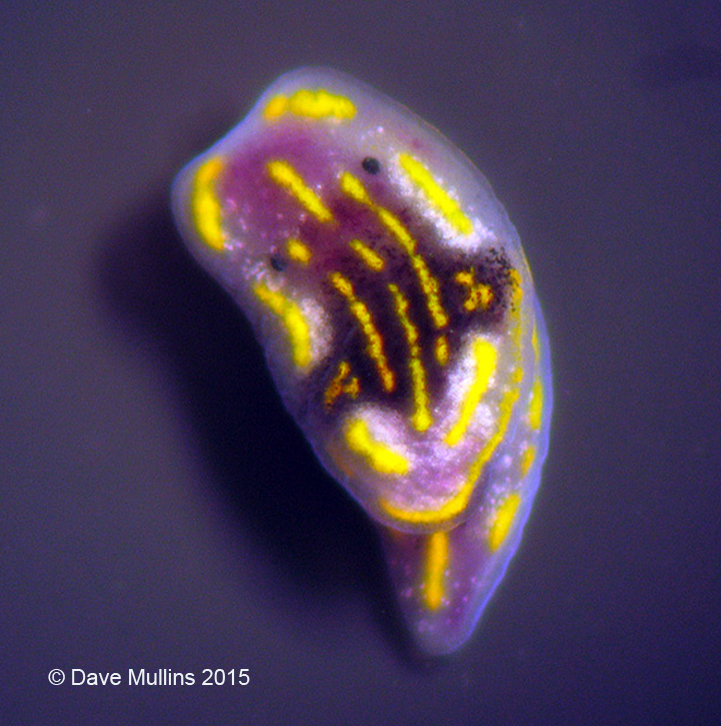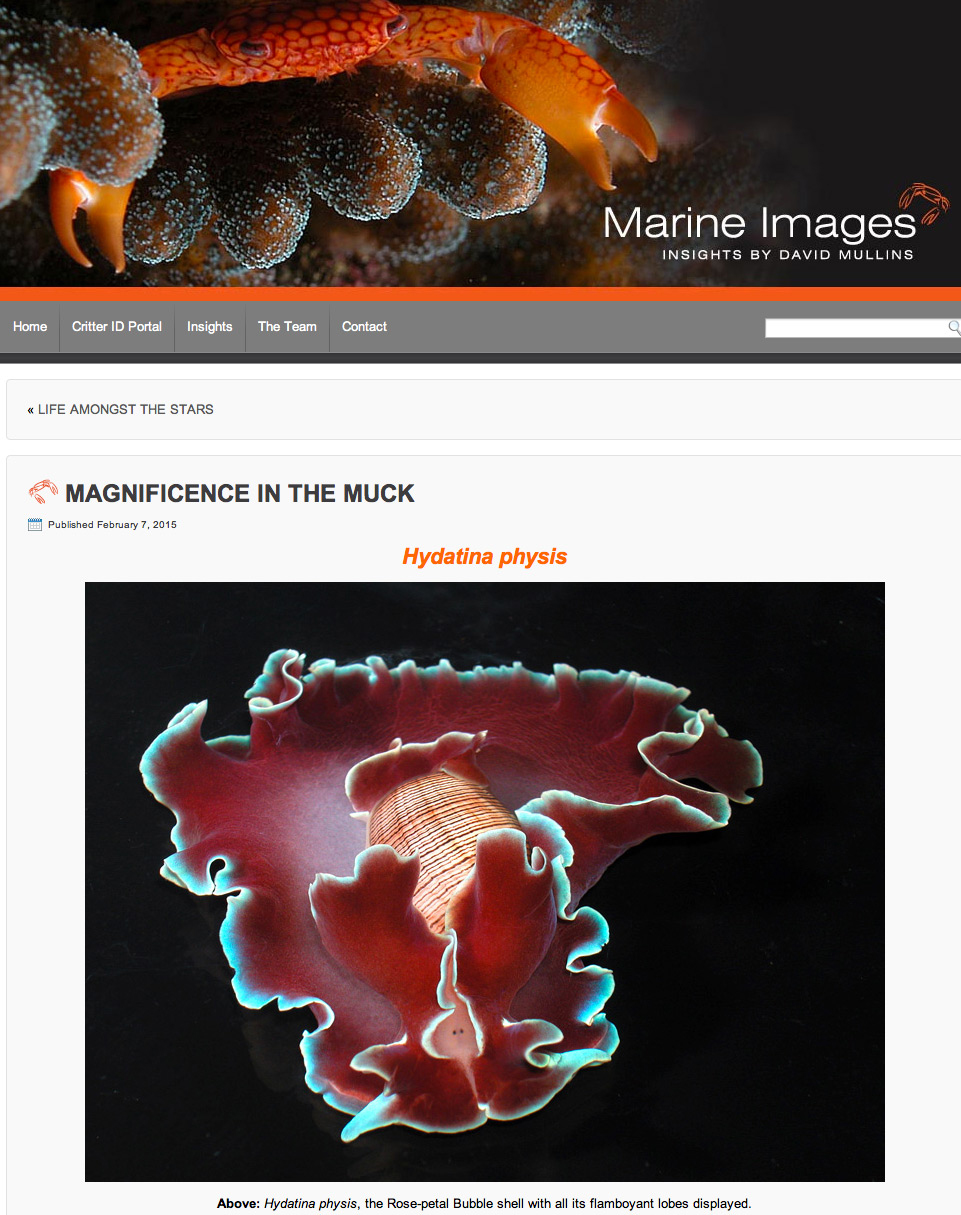 |
Ilbia ilbi
Image courtesy of Dave MullinsCanon A640 mounted on trinocular stereomicroscope
Specimens sourced from Currimundi Reef, Sunshine Coast, Queensland, Australia.
Dave Mullins on location
 |
Ilbia ilbi , Burn 1963
When a goal is set to find all of the sea slugs in your backyard inevitably, once all of the large obvious species are discovered, attention is turned to the smaller examples. Many of these aren't to be found during the dive itself but can be seen floating on the surface of a collection bowl, having come off a temporarily collected piece of substrate growth. Most often appearing to the naked eye as a spot, the true amazing colours and patterns are only revealed under magnification. One such example is Ilbia ilbi (Bill Rudman's Sea Slug Forum) instantly recognizable by its pale purple body and on the dorsum a distinctive yellow and white pattern of markings and a large dark patch indicating the visceral mass below. Most sea slug aficionados will be familiar with the runcinids - those tiny headshield slugs that look at first glance like the little acoel flatworms. Ilbia ilbi has this likeness however it does not belong to the Runcinidae but instead to a very small family - Ilbiidae, which is poorly known and only contains three described species. Externally the main anatomical differences are the lack of any gill structure and a posterior furrow on the sole of the foot. Otherwise it is small (1-4 mm) slender and flattened with a smooth slug-like appearance having no shell or any internal remnant thereof. The notum is undivided, overhangs all around without division between head and visceral mass and eyes being conspicuous dorsally. The tail is longer than the notum and the foot lacks any kind of tentacular or parapodial expansion. Ilbia ilia moves by way of cilia best explained by the species' author: "The entire dorsum, sides and sole of the foot are covered with vibratile cilia. This enables the animal to crawl along on a flat surface equally well either on the sole or the dorsum, or on the side when both surfaces are used." Internally Ilbia ilbi possesses numerous opaline glands located as a mass posteriorly on the dorsum with each glandula having its own aperture. Well-developed opaline glands are a characteristic of the order Anaspidea (which contains the Sea Hares) and that affinity has lead to the view that Ilbia ilbi and it close cousins are at the top of the cephalaspidean classification. |
References:
- Burn R. (1963) Australian Runcinacea (Mollusca: Gastropoda). The Australian Zoologist, Sydney, Royal Zoological Society of New South Wales V.13 Pp 9-22
- Burn R. & Thompson T.E. (1998) Order Cephalaspidea Pp 943-959 in Beesley, P.L., Ross, G.J.B. & Wells, A. (eds) Mollusca: The Southern Synthesis. Fauna of Australia. Vol. 5. CSIRO Publishing: Melbourne, Part B.
Dave Mullins
Queensland, Australia
March 2015
Send Dave email at marineimages@hotmail.com

|
